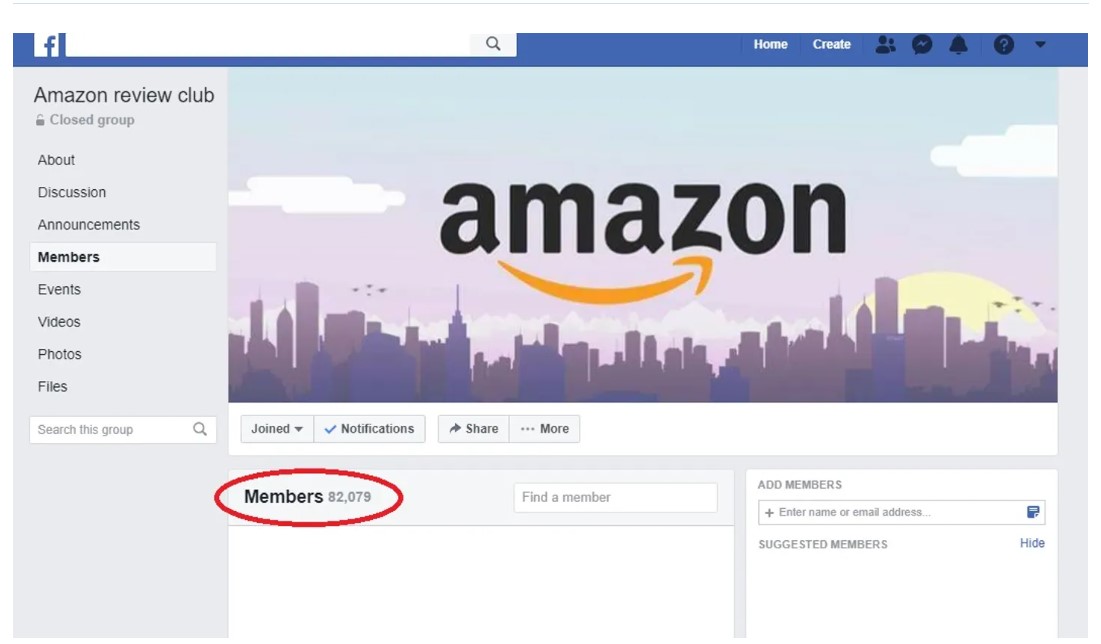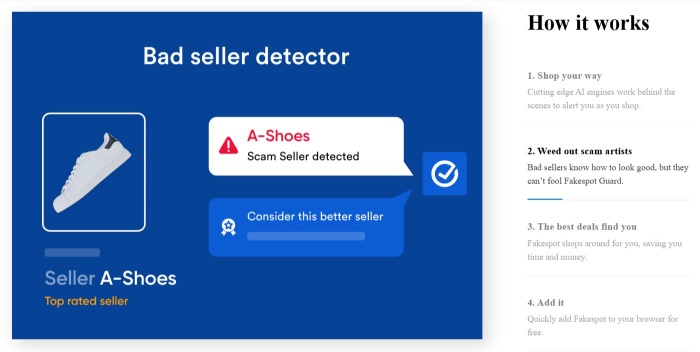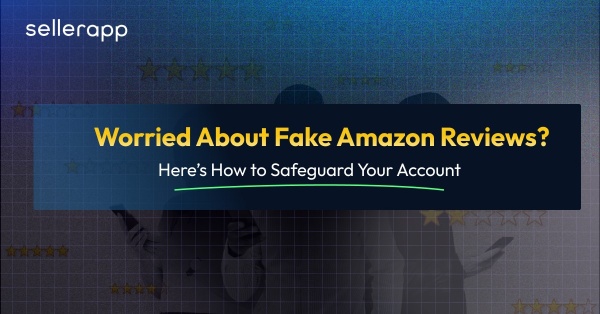Did you know that you have probably trusted an Amazon fake review without even realizing it? Unfortunately, a whopping 40% of all Amazon reviews are fake, and the chances are you have read (or trusted) one without realizing it are incredibly high.
Now, reviews are incredibly important. Whether you are buying a new gadget, a skincare product, or a set of kitchen knives, reviews play a powerful role in influencing buyers’ decisions.
But what happens when those reviews are paid, fabricated, or completely planted? They not only mislead potential buyers but also distort competition, damage trust in genuine products, and can seriously hurt a brand’s reputation.
Amazon fake reviews have become a growing concern, affecting both consumers and honest sellers. They twist the Amazon product ranking, fade away the trust, and can lead shoppers to waste money on low-quality products.
So the big question is: does Amazon have fake reviews? Unfortunately, the answer is Yes.
In this article, we will help you find out how to spot Amazon fake reviews, explain how Amazon is working to remove fake reviews, and what you can do to avoid being misled.
Whether you have questioned the authenticity of Amazon reviews or simply want to make smarter, safer buying decisions, this article will walk you through how Amazon fake reviews work, how they impact sellers and consumers alike, and how you can spot and avoid them.
What are Amazon’s fake reviews?

Amazon fake reviews are reviews that mislead shoppers by presenting a false impression of the product’s quality or performance. These reviews can be incentivized by sellers, written by bots, or a part of review swap schemes where sellers trade positive feedback to one another.
While some reviews are generated automatically, others are crafted by real people hired to post fake feedback.
For a seller, the pressure to maintain high ratings and visibility in a crowded marketplace can be intense. Alas, some sellers choose unethical ways, such as buying fake reviews, to outshine competitors.
Others might fall victim to fake negative reviews placed by rivals attempting to sabotage their reputation.
There is a critical difference between organic reviews, which come from genuine customer experience, and manipulated reviews, which are posted with the intent to misguide. Organic reviews, both positive and negative, help build trust and credibility. Manipulated reviews, on the other hand, not only misguide buyers but also damage the integrity of the platform, resulting in account suspension or permanent ban.
Importance of Reviews on Amazon
On Amazon, reviews are not just opinions; they work as a currency. The Amazon platform heavily relies on reviews to determine which product gets visibility and which one is buried. This is why it is important to understand the importance of reviews for both sellers and buyers.
Amazon’s algorithm uses a combination of factors to rank products in search results. Two of the influential signals are star ratings and review counts.
Products with a high number of positive reviews are most likely to appear on the first page of results, where the majority of the sales happen.
Naturally, this gives sellers an incentive to maintain glowing feedback, sometimes leading to the temptation of manipulating the system with Amazon fake reviews.
But the impact does not stop at organic rankings. Reviews also influence ad performance. Positive social proof can boost click-through rates (CTR) and conversion rates (CVR) on Sponsored Products or Sponsored Brands ads.
On the other hand, poor or fake reviews can inflate ACoS, resulting in sellers spending more on ads while seeing fewer returns.
In a nutshell, fake reviews can undermine both your organic visibility and your paid marketing efficiency, making them a threat not just to consumers but to honest sellers trying to compete fairly.
Statistical Overview
Understanding the scale of Amazon fake reviews helps both consumers and sellers comprehend why detecting manipulated feedback is important.
For example:
There are over 42% Amazon fake reviews
Review meta recorded a jump from 36% to 45% during the prime day/ holiday shopping spikes
Over 60% of product reviews show deception signals
A 2023 Consumer Reports study found that around 61% of reviews on Amazon, especially in electronics, show fake behavior..
Review42’s 2025 data reported
61% of electronics, 63% of beauty, and 64% of supplements reviews were unreliable.
Rapid growth in review volume over time
ReviewMeta observed that unverified, nearly perfect 5-star reviews skyrocketed from 250,000/month by March 2023
These statistics are not just numbers; they represent a breakdown of trust. For consumers, it means buying decisions are often based on fiction. For sellers, it means competing with artificially boosted products, which undermines real value, honest marketing, and long-term brand credibility.
That’s why identifying and understanding manipulated feedback is no longer optional; it is a necessary skill for navigating the platform fairly and effectively.
Top categories affected by fake reviews
Electronics, supplements, beauty, cell phone accessories, and kitchen appliances are most affected.
Redditors who run Amazon seller operations estimated that over 30% of the top sellers in supplements, toys, chargers, etc, use fake reviews.
If you are a seller, manipulated reviews can be tempting, but they come with a possible risk. High review counts and star ratings can catapult a product onto Amazon’s first page and boost conversions, but posting improperly can result in account suspension or ban.
Meanwhile, honest sellers face an uneven playing field, forced to compete in categories dominated by artificially inflated listings.
How Amazon fake reviews are created
When it comes to Amazon fake reviews, some of the most widespread and organized schemes are run through social media platforms and freelance websites. These channels act as an underground marketplace where sellers connect with people willing to post reviews for a price.
Facebook Groups: The Original Hub
Facebook has been a hotbed for review manipulation. Private group with names like “Amazon Review Club” or “5-star Review Exchange USA” hosts thousands of members.
Sellers post offers to reimburse the buyers via PayPal, Venmo, or Gift cards in exchange for leaving a verified purchase 5-star review. The product is typically sent for free or with a refund after the review is posted.
Telegram: The Global Network
Telegram is gaining traction due to its privacy and lack of moderation. Sellers use encrypted channels to coordinate large-scale review campaigns across the U.S. Some telegram groups even categorize reviewers by Amazon region, reputation scores, and activity level.
Fiverr and freelance platforms
Fiverr and similar platforms used to be open about offering Amazon review services, but many listings are now disguised under terms such as product feedback or listing booth.
Bot-Generated Reviews
Automation plays a growing role in review fraud. These methods are harder to detect and are often used at scale:
Review Bots
Scripts or automated tools are used to mass-post Amazon fake reviews across multiple products. While Amazon regularly updates its detection algorithms, some bots are designed to mimic human behavior, such as varying language and timing, to avoid detection.
Account Farms
Some operations use large networks of fake or hacked Amazon accounts, often linked to stolen identities or mass-created using spoofed emails and IPs. These accounts can generate bulk reviews quickly, resulting in a sudden spike in “verified” feedback for sellers.
Other Tactics & Grey Areas
Not all fake reviews come from obvious fraud. Some are created through questionable or ethically cryptic tactics:
Incentivized Reviews Hidden as Promotions
Sellers may offer heavy discounts, loyalty points, or gift cards with “no obligation” to review, while strongly implying that positive feedback is expected.
Family and Employee Reviews
Reviews from relatives, staff, or personal networks are often submitted to boost early listings, especially for new products, technically against Amazon’s policy, but much harder to track.
Data analysis: Spotting Fake Reviews
When it comes to identifying Amazon fake reviews, data doesn’t lie. By analyzing patterns in the review behavior, timing, and language, it is easier to uncover suspicious activity even if a review looks legitimate on the surface.
That is where specialized tools and simple statistical techniques come into play.
Fakespot

The tool is used to detect fake Amazon reviews, which analyzes review authenticity using machine learning to detect unnatural patterns such as repetitive phrases, overly positive tones, or non-verified purchasers. Each product is given a grade A-F to indicate trustworthiness.
ReviewMeta
Breaks down Amazon fake reviews into detailed reports, flagging suspicious language, timings, and excessive use of unverified or incentivized reviews. It filters out fake reviews to provide a true average rating.
Amazon’s algorithm
While not public, Amazon uses AI and manual moderation to detect and remove fake reviews. They claim to block hundreds of millions of reviews annually, but the gaps remain.
Methodologies to spot fake reviews on Amazon
It is essential to identify fake reviews on Amazon to make informed purchases, and it starts with knowing what signs to look for:
| Methodology | What to Look For | Pro Tips & Tools |
|---|---|---|
| Suspicious Review Patterns | Sudden spike in 5-star reviews- Clustered review dates- New products with hundreds of glowing reviews | Use Fakespot to track review growth and timing |
| Overly Generic or Glowing Language | Repeated phrases: “best-ever,” “amazing,” “life-changing”- No specifics or real use cases | Real buyers mention details: flaws, packaging, use experience |
| Suspicious Reviewer Profiles | No profile pic or fake-looking profile- All 5-star reviews across random categories | Click profiles: look for review history, consistency, and authenticity |
| Stock or Recycled Media | Same images across different products- Videos that feel scripted or promotional | Use Google Lens to reverse image search. Look for authentic, casual content |
| External Review Analyzers | Confusing or too-good-to-be-true ratings. Listings with inflated scores | Use Fakespot, ReviewMeta for deeper analysis |
| Trust Mid-Star Reviews | 3- and 4-star reviews often give pros and cons- Avoid all-5-star listings | Sort reviews by Most Recent or Critical to find real experiences |
| Cross-Platform Validation | Product exists only on Amazon- No mention on Reddit, YouTube, or Google | Search for the product on multiple platforms before buying |
Consumer & Seller Impact
Amazon fake reviews don’t just twist ratings, they twist reality. When shoppers rely on manipulated feedback, they risk more than buyer’s remorse.
For consumers
Many buyers trust high ratings as a shortcut for product quality. But when fake 5-star reviews flood a listing, consumers end up buying items that don’t meet expectations or fail. These result in returns, frustration, and loss of faith in the platform.
For Sellers
For honest sellers, fake reviews on Amazon create an incredibly unfair playing field. Competing with sellers who inflate their ratings through dishonest means is frustrating and discouraging. Many genuine sellers feel pressured to either lower their standards or buy fake reviews just to stay relevant.
This growing problem not only damages seller reputations but also erodes customer trust in the entire Amazon review system. As a result, some sellers are now actively seeking ways to remove Amazon fake reviews to protect their brand and reputation.
Beyond lost revenue, the presence of fake reviews can trigger severe consequences, including account suspension, loss of the Buy Box, and permanent damage to a brand’s reputation. In some cases, sellers associated with fake review practices, even inadvertently, may face legal action under consumer protection laws.
As the integrity of the review system declines, many genuine sellers are now actively investing in tools and services to detect and remove fake reviews to safeguard their business and restore customer trust.
Amazon’s Response & Regulation
In response to the increasing volume of Amazon fake reviews, the company has implemented several strategies to detect and remove inauthentic content.
One major approach involves the use of machine learning algorithms. These systems are trained to identify patterns associated with suspicious review behavior, such as sudden spikes in positive feedback, repetitive language, or unusual reviewer activity. This data-driven method allows Amazon to flag and remove fake reviews at scale.
Legal & Ethical Landscape
From a regulatory perspective, the U.S. Federal Trade Commission (FTC) has intensified its focus on deceptive marketing practices, including fake online reviews. Under FTC regulations, endorsements must reflect honest opinions and experiences.
Brands or individuals that mislead consumers through false reviews risk legal consequences, including fines and mandatory corrective actions.
The FTC has also issued updated guidelines for platforms like Amazon, holding them partially accountable for the content hosted on their sites. This includes ensuring that fake reviews are not allowed to influence consumer decisions.
For sellers, compliance is critical. Participating in fake review schemes not only violates Amazon’s policies but may also breach federal laws. Ethical selling practices are essential not only to maintain account standing but also to build long-term trust with customers.
Are there bots on Amazon reviews?
Unfortunately, yes, sometimes there are bots involved in Amazon fake reviews, although Amazon continuously works to detect and remove them. These bots are often used to post fake reviews at scale, either to boost a product’s rating artificially or to harm a competitor’s reputation.
In some cases, they manipulate the visibility of reviews by marking certain ones as helpful or not helpful, twisting what potential buyers see first.
While Amazon employs advanced detection systems to curb this activity, some bots still manage to bypass safeguards, making it important for both sellers and shoppers to stay alert and critical of suspicious review patterns.
Best Practices for Sellers: Protect Your Brand from Fake Reviews
As Amazon fake reviews continue to undermine fair competition and customer trust, sellers must adopt clear strategies to protect their brand integrity. From monitoring to reporting suspicious activity, taking action against fake reviews is no longer optional; it is essential for long-term success on Amazon.
Monitor and Report Suspicious Activity

Sellers should actively monitor their product reviews and listings for any suspicious activity. Unexpected spikes in 5-star or 1-star ratings, repetitive language, or reviews from accounts with little purchase history may indicate fake reviews on Amazon.
Use Amazon’s “Report Abuse” feature to flag these reviews for investigation. Prompt reporting can help remove fake reviews and maintain the integrity of your Amazon product listings.
Use Amazon’s Brand Protection Tools
Enrolled in Amazon Brand Registry? Take advantage of tools like Amazon’s Transparency program and Project Zero, which help registered brands detect counterfeits and review manipulation.
These features are especially valuable for sellers concerned about unfair competition or manipulated feedback.
Avoid Third-Party Review Schemes
Never purchase reviews or participate in “review exchange” groups. These practices violate Amazon’s policies and can lead to account suspension or permanent removal.
Sellers should also avoid using third-party services that promise “verified” reviews or boosted ratings, as many are tied to review farms flagged by Amazon.
Encourage Genuine Customer Feedback
Requesting honest feedback from verified buyers is both ethical and effective. Amazon allows sellers to send follow-up emails through the platform’s messaging system or use the “Request a Review” button in Seller Central. This tool ensures that communication remains compliant with Amazon’s terms while giving customers a chance to share their real experiences.
Stay Informed on Policy and Regulatory Updates
Amazon frequently updates its review guidelines and enforcement practices. Additionally, regulations such as the FTC’s rules on fake endorsements apply to all sellers operating in the U.S. Stay informed to ensure your marketing strategies remain compliant and transparent.
Final Thoughts
Amazon fake reviews continue to pose serious challenges for both consumers and sellers. For buyers, they lead to misinformed purchases and potential health and safety risks. For genuine sellers, they create unfair competition, damage brand reputation, and pressure businesses into unethical practices just to remain competitive.
To protect your brand, it’s essential to stay informed, follow Amazon’s policies, and take proactive steps to monitor and manage your reviews. Leveraging the right tools can make all the difference.
SellerApp offers a suite of advanced tools and solutions designed to help Amazon sellers track listing performance and maintain brand integrity.
For example, SellerApp’s Chrome Extension offers real-time review monitoring, competitor analysis, and data-driven insights. SellerApp empowers sellers to act quickly and stay compliant with Amazon’s evolving standards.
Let us know if you liked the post. That’s the only way we can improve.
Post Written by:
Let us know if you liked the post. That’s the only way we can improve.

Leave a Reply